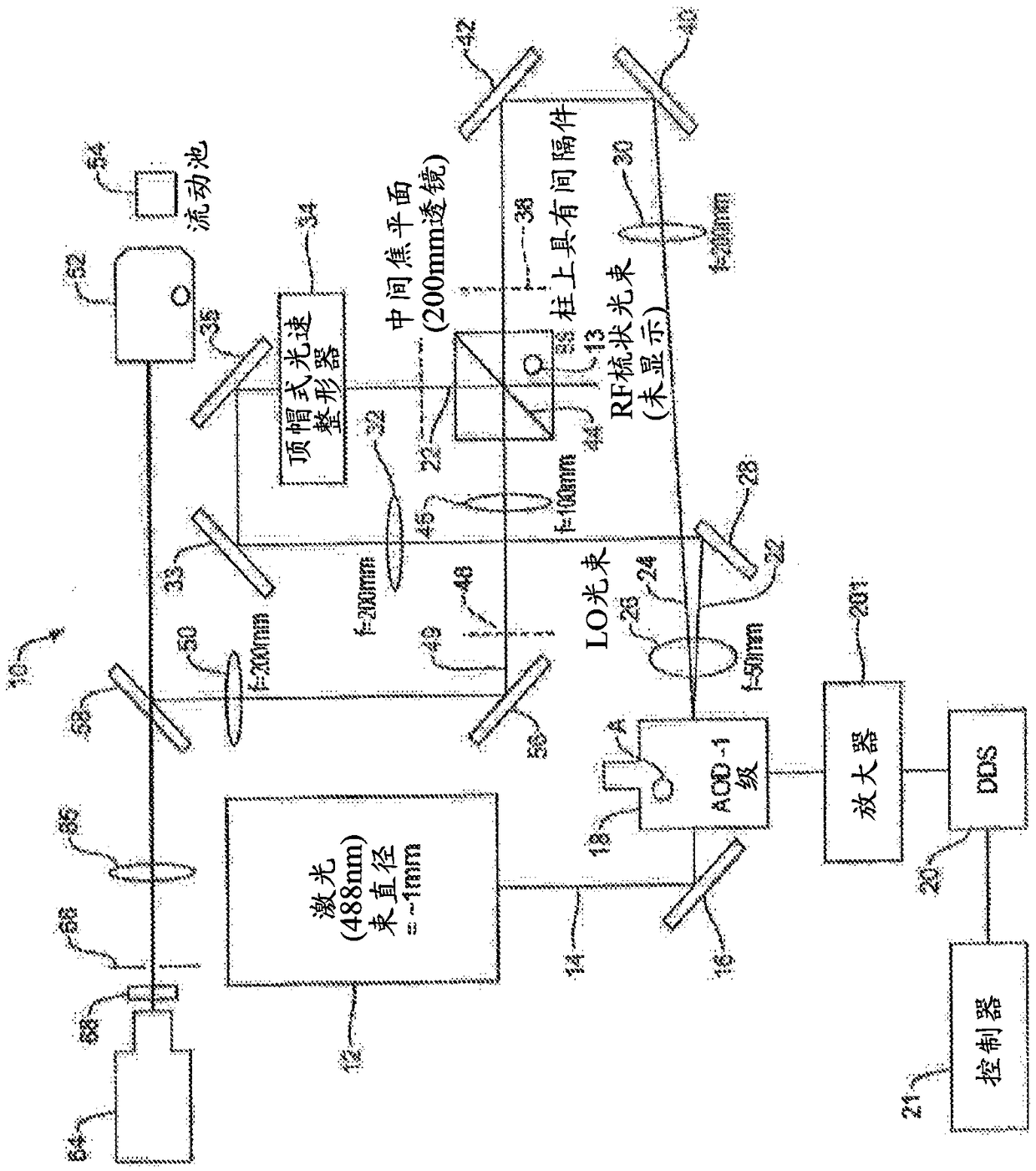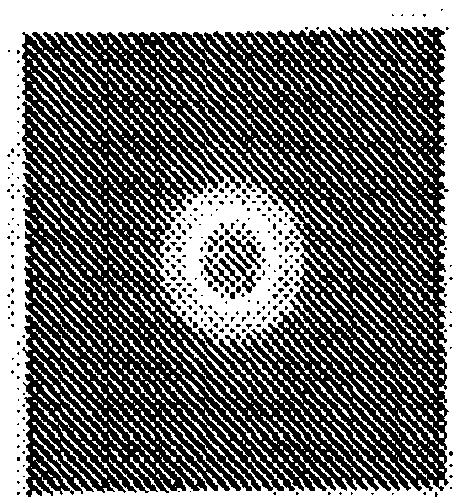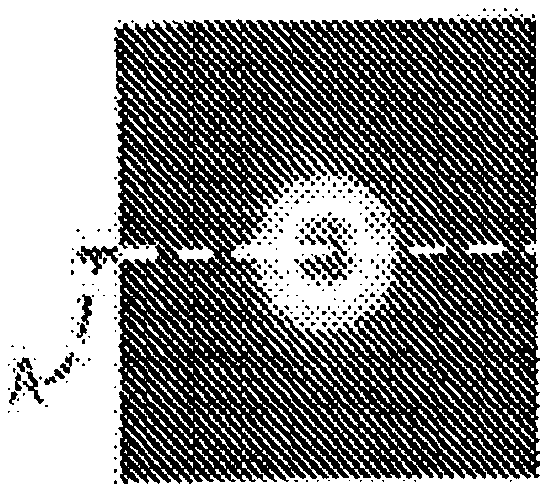Fluorescence imaging flow cytometry with enhanced image resolution
A flow cytometry, imaging technology, applied in image analysis, image enhancement, fluorescence/phosphorescence, etc., which can solve the problems of insufficient flexibility for sample analysis and difficulty in obtaining blur-free images.
- Summary
- Abstract
- Description
- Claims
- Application Information
AI Technical Summary
Problems solved by technology
Method used
Image
Examples
Embodiment 1
[0173] A system was used to measure fluorescent radiation from polystyrene beads dyed with 8 discrete levels of fluorochromes similar to the above in conjunction with figure 1 described with a combination similar to Figure 9A The detection system of the described detection system, the fluorescent dye is sold under the trade name RCP-30-5A by Spherotech Inc. of Lake Forest, IL. The system was also used to generate brightfield and darkfield images in the manner described above.
[0174] Figure 16A is a scatter plot of dark field intensity versus bright field intensity. Use a rectangular portion of the graph as a gate to generate Figure 16B , 16C and the data in 16D, which contained approximately 32% of all events measured (a total of 50,000 events detected). Figure 16B A scatter plot of red fluorescence (PI) versus green fluorescence (FITC) emitted by each particle is shown. The figure clearly shows 8 populations with different brightness levels. Figure 16C and Fig...
Embodiment 2
[0176] FIRE, brightfield, and darkfield images of fixed peripheral blood leukocytes stained with CD45-FITC and propidium iodide were obtained using a system similar to the above combined figure 1 described with a combination similar to the above Figure 9A Discuss the detection system of the detection system. Samples also contained a portion of live HeLa cells stained with Calcein-AM. During data acquisition, cells were flowed through the flow cell at a rate of 0.5 m / s.
[0177] Figure 17A Images shown in are from top to bottom: brightfield, overlay of CD45-FITC and propidium iodide fluorescence channels, brightfield, darkfield, CD45-FITC and PI channel fluorescence. No compensation is applied, and all images are automatically scaled for viewing. The cells numbered 2, 3, 5, 8, 9, 12, 17, 20 and 21 are HeLa cells (group B), and the others are leukocytes (group A).
[0178] Figure 17B is a scatter plot where population A represents leukocytes and population B represents ...
Embodiment 3
[0180] FIRE, brightfield, and darkfield images of fixed peripheral blood leukocytes stained with CD45-FITC and propidium iodide were obtained using a system similar to the above combined figure 1 described with a combination similar to the above Figure 9A Discuss the detection system of the detection system. Samples were spiked into fixed aliquots of MCF-7 cells stained with anti-EpCAM-FITC and propidium iodide (PI). During data acquisition, cells were flowed through the flow cell at a rate of 0.5 m / s.
[0181] Figure 18A Images shown in are from top to bottom: brightfield, overlay of FITC and PI channel fluorescence, brightfield, darkfield, FITC and PI fluorescence. In the leukocyte population, green fluorescence is an artifact of fluorescence leakage from PI staining. All images are automatically scaled in brightness for viewing, therefore, leukocytes appear to exhibit FITC fluorescence, but this is a signal of a small amount of fluorescence leaking in from PI. Cells ...
PUM
 Login to View More
Login to View More Abstract
Description
Claims
Application Information
 Login to View More
Login to View More - R&D
- Intellectual Property
- Life Sciences
- Materials
- Tech Scout
- Unparalleled Data Quality
- Higher Quality Content
- 60% Fewer Hallucinations
Browse by: Latest US Patents, China's latest patents, Technical Efficacy Thesaurus, Application Domain, Technology Topic, Popular Technical Reports.
© 2025 PatSnap. All rights reserved.Legal|Privacy policy|Modern Slavery Act Transparency Statement|Sitemap|About US| Contact US: help@patsnap.com



